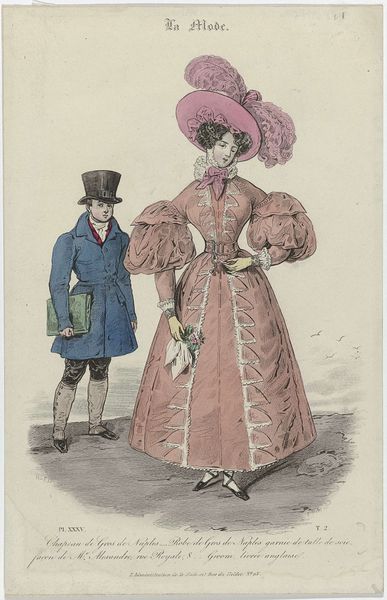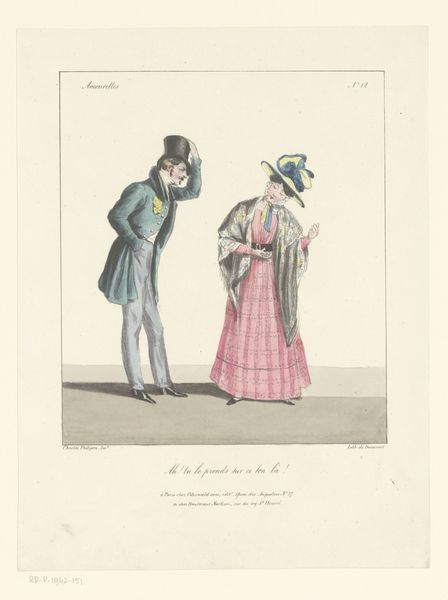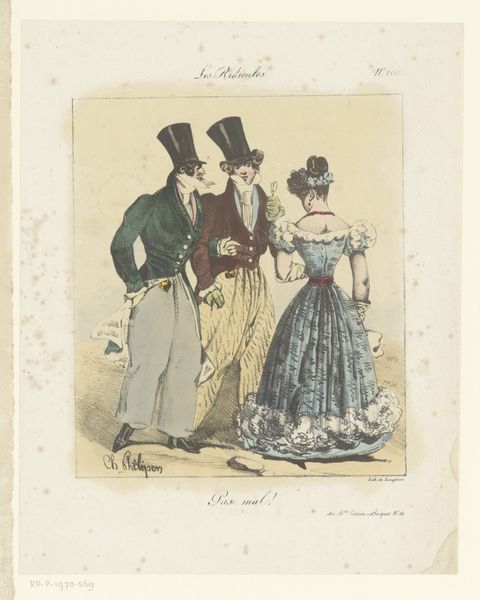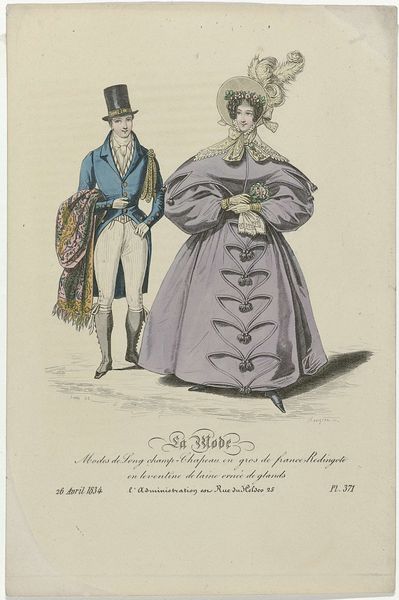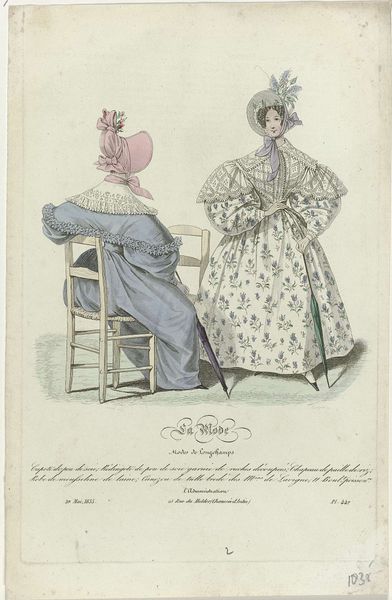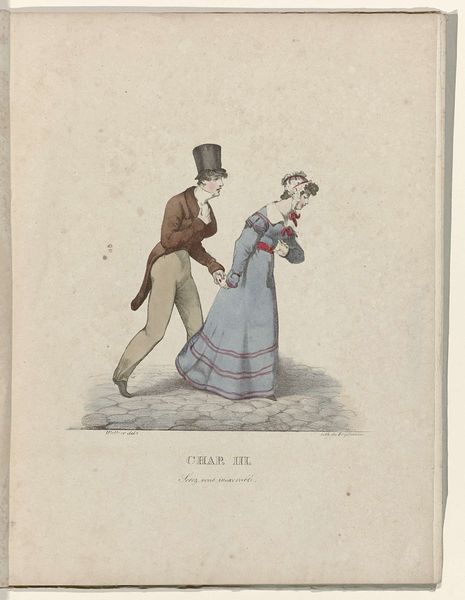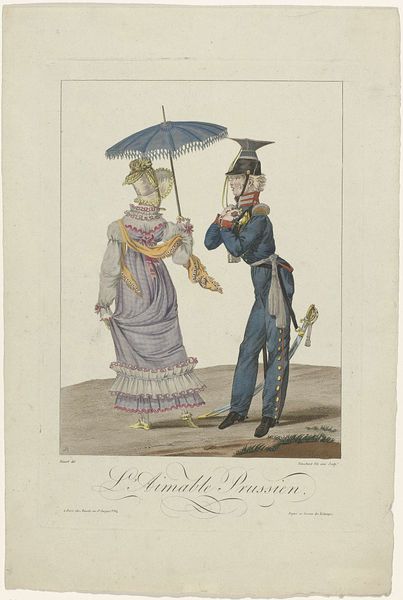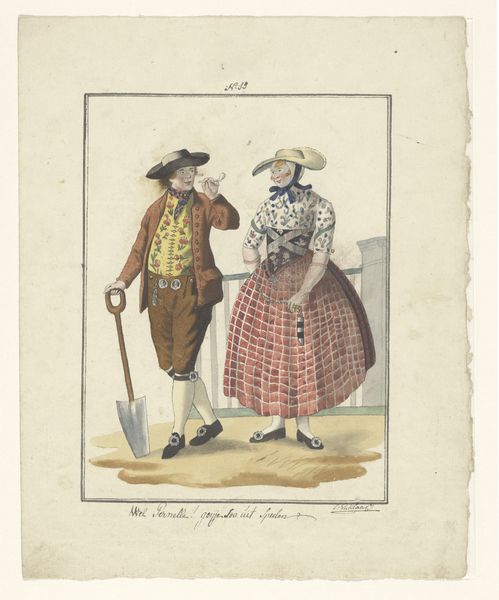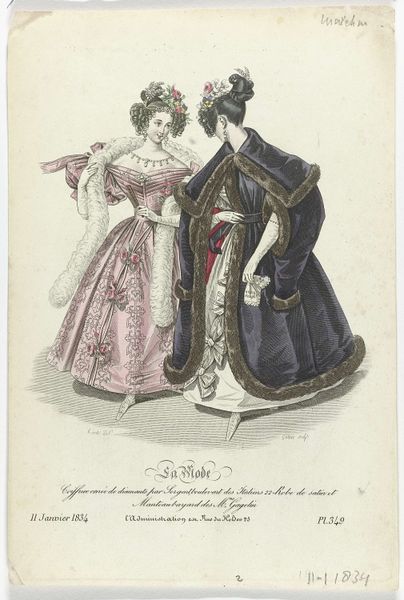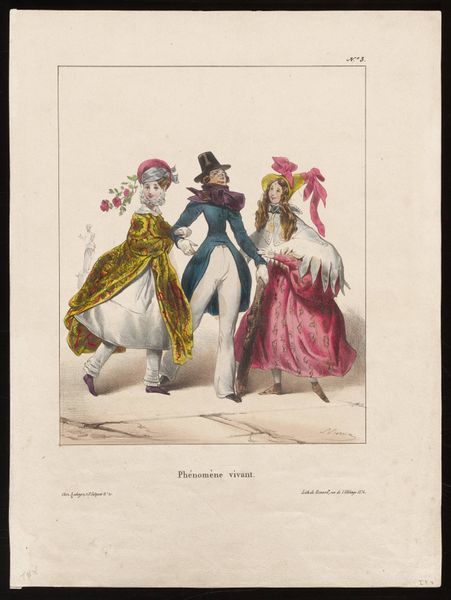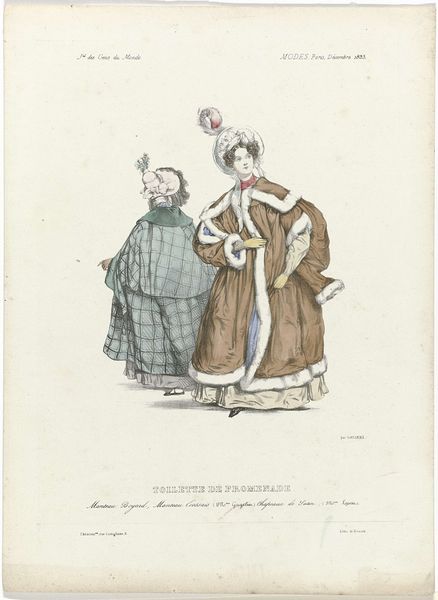
drawing, print, etching
#
portrait
#
drawing
# print
#
etching
#
romanticism
#
genre-painting
#
dress
Dimensions: height 221 mm, width 140 mm
Copyright: Rijks Museum: Open Domain
Curator: This print is titled "La Mode, 21 décembre 1833". It's attributed to Jean-Denis Nargeot and dates back to 1833. We see etching combined with other printing methods on display. Editor: The very first thing that strikes me is the almost cartoonish exaggeration of the silhouettes! The massive sleeves, particularly, create a sort of whimsical, theatrical effect. Curator: Absolutely. Think about the context of 1833—the rise of Romanticism was in full swing, deeply influencing aesthetics and ideals of beauty. Fashion became another way to express this heightened sense of emotion and individuality, perhaps through hyper-femininity. Editor: These oversized sleeves remind me of wings. There is a symbolic push toward the ethereal; clothing here signals the aspirational quality of art, but I wonder how far back one would need to search to see wings, sleeves, or garments taking on such significance? Curator: Indeed. Also, let's consider how publications such as "La Mode" functioned as tools to construct and disseminate ideals of femininity and social standing. Who gets to participate in this vision of high society? How much access does a diverse audience have to it? These fashion plates acted as both aspirational devices and markers of exclusion. Editor: Certainly the visual vocabulary used, particularly through line and color, feels intentionally elevated. This, again, prompts further associations to social position or a celestial association in the color stories. Curator: Ultimately, prints like these open a fascinating window into understanding not just fashion, but also the intricate relationship between art, society, and identity in 19th-century France. Editor: It's fascinating to ponder what these symbols communicated about longing and power in their time and what whispers still linger in our own interpretation.
Comments
No comments
Be the first to comment and join the conversation on the ultimate creative platform.
